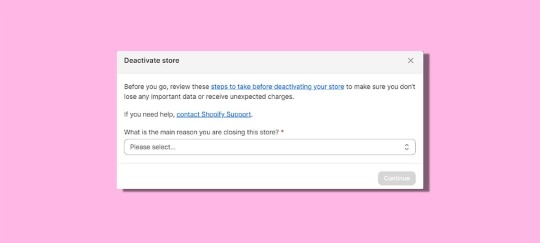#storemanager
Explore tagged Tumblr posts
Text

#NLP#nlpcoach#nlpcoaching#coachingwithNLP#lifecoach#lifecoaching#lifecoachingwithNLP#NLPlifecoaching#retail#retailemployees#retailmanagers#storemanagers#storemanager#coachingforretail#retailcoach#NLPforretail#coachingforartists#NLPforartists#artists#coachforartists#landlords#tenants#coachinglandlordsandtenants#landlording#learningdifficulties#coachingforlearningdifficulties#NLPforlearningdifficulties#learningdifficultiescoach#teachers#educators
2 notes
·
View notes
Text

#jobs#jobsearch#male#free free free#jobseekers#graduatejobs#job interview#job#gorakhpurjob#gorakhpur#storemanager#store#manager#retailjewelers
0 notes
Text

ICYMI: Lowongan Kerja Store Manager (SM) - Product Consultant (PC) di Bumilindo November 2024 http://dlvr.it/TH5vtg
0 notes
Text

Friendsjob Started Hiring for Store Supervisor/Restaurant/Cafe Supervisor(Retail) Assistant Supervisor
Job Details A store supervisor is a manager within retail or department stores. The responsibilities of a store supervisor are various, depending on the size and type of store. They oversee employees, supervise sales, maintain inventory, and provide customers with goods and services. Store supervisors also train, guide, and supervise employees to ensure they follow company policy. Employees are responsible for working effectively and efficiently, meeting deadlines, and upholding company standards.
👉 Send message on WhatsApp to those who seriously want a JOB! 👉 We are looking for hardworking and serious at work!
To get more information Contact Us on Friends Job WhatsApp Service.✅ https://wa.me/message/JNJUGHPZM75CL1
#storesupervisorjob#storemanager#storemanagerjobs#friendsjob#storesupervisorvacancy#storesupervisor#retailsupervisors
0 notes
Photo

"Lead, inspire, and elevate as a Store Manager!" 🛍️
Call Now: +91 7226004473
Send cv on email : [email protected]
0 notes
Video
tumblr
Store & Inventory Management Software Fully Integrated with other Department Call Us Now: 090091 55444, 9131333485 Visit: http://techwaveitsolutions.com/ http://concorderp.com/ . . .
#storemanagement#storemanagementsoftware#BusinessGrowth#inventorymanagementsoftware#softwarecompany#softwaredevelopmentcompany#instagramgrowth#StoreSoftware#InventorySoftware#reelsinstagram#trendingreels#reels#instagramstory#instagramstories#contentcreation#explore#viral#trending#viralreels#erpsoftware '#`software#development#erpservices#management#services#techwaveitsolutions#post#postoftheday#instagram#instagood
2 notes
·
View notes
Text

Nothing excites a true learner more than an opportunity to experience real-world exposure. For aspiring sports managers, it’s a stepping-stone toward a successful career.
Our sports management students recently completed their volunteering week at Decathlon For Organisation (India), Malad- Mumbai’s largest sports store while gaining a detailed understanding of various facets of sports retail management like product knowledge, customer experience, store management, and team collaboration.
One of our IISM students, Vivek Jha shared his experience with us. ���The work exposure provides me with invaluable learning opportunities that will shape my future endeavors.”
Hardik Nakhate, another sports management student stated, “My internship at Decathlon was just exceptional.”
Along with acquiring on-field knowledge, they also had exposure to networking with industry personnel.
#iism#iismstudents#sportsmanagement#decathlon#sportsretail#volunteerexperience#internship#productknowledge#customerexperience#storemanagement#teamcollaboration#networking#industryexposure#careerdevelopment#sportsindustry#futureleaders#makingadifference
0 notes
Text
Essential Plugins for WooCommerce Store Management

The amount of work required to run an online WooCommerce store can be daunting. Growing sales is fantastic, but it can be challenging to stay on top of everything, including processing orders, monitoring inventory, responding to consumer enquiries, and enhancing product pages.
Plugins for WooCommerce Store Management can be useful in this situation. Many of these time-consuming chores may be automated with the correct plugin, freeing you up to concentrate on what really matters—expanding your company. We'll go over some of the top plugins in this post to help you manage your store more easily so you can focus on growing your company.
7 Plugins to Simplify WooCommerce Store Management
Here’s a look at seven plugins that can make managing your WooCommerce store easier. These plugins will help automate tasks, boost efficiency, and improve your overall store management.
1. PW WooCommerce Bulk Edit
PW WooCommerce Bulk Edit is a powerful plugin for managing WooCommerce products. It simplifies the process with an easy-to-use interface, letting you quickly make bulk changes to product details like prices, stock levels, and descriptions. You can even see live previews as you edit.
The Pro version offers even more features, allowing advanced editing and bulk management of additional product fields, making it a must-have for busy store owners.
2. Related Products - WooCommerce Advanced Bulk Edit
Related Products Pro for WooCommerce is a handy plugin that makes it easier to manage product relationships in your store. With its features, you can quickly bulk edit related products, upsells, and cross-sells, saving time and boosting sales.
The plugin also uses ChatGPT’s AI to suggest product ideas based on what your customers like. Its advanced bulk editing features can save you a lot of time when managing your store. If you need to customize this plugin further to suit your business, consider getting expert help for WooCommerce plugin development.
3. Discontinued Products Stock Status
The “Discontinued Product Stock Status Pro for WooCommerce” makes it easy to manage products that you no longer sell. This plugin allows you to mark items as ‘Discontinued,’ so customers know what’s happening while keeping your store's search engine traffic intact. Instead of just labeling items as “Out of Stock” or removing their pages, you can keep discontinued products visible and communicate their status clearly.
The Pro version of this plugin helps you manage your inventory accurately, ensuring customers know which items are discontinued while still offering them alternative options. By keeping these products online, you won’t lose valuable SEO traffic and potential sales, making the process smoother for both you and your customers.
4. PDF Invoices & Packing Slips for WooCommerce

Your store may streamline invoicing with the help of the WooCommerce PDF Invoices & Packing Slips plugin. It enables you to include UBL or PDF bills with order confirmation emails, making your communications look more polished.
A basic template is included with the plugin, however you can also find additional themes from WP Overnight or make your own to fit your style. Because of this, it's a fantastic choice if you want to collaborate with WooCommerce plugin developers to create unique solutions.
In conclusion
Taking care of a WooCommerce store doesn't have to be too difficult. You may automate repetitive chores, optimise your operations, and concentrate on expanding your business by utilising the appropriate store management plugins. Whether you need to manage discontinued items, create invoices, maintain inventory, or edit products in bulk, these WooCommerce plugins can help you save time and minimise errors.
Take control of the operations of your store. Try these must-have WooCommerce store management plugins now to boost productivity!
#WooCommerce#Ecommerce#OnlineStore#WooCommercePlugins#StoreManagement#EcommerceTools#BusinessGrowth#InventoryManagement#ProductManagement#CustomerExperience#SmallBusiness#SalesBoost#Automation#EcommerceSuccess
0 notes
Text

Guesswork in inventory is costly—know your stock, know your success! 📦🚫❓ #inventoryaudit #stockcount #inventorymanagement
need help click here https://topmate.io/auto_fans/740350
#inventoryaudit#stockcount#inventorymanagement#spareparts inventorymanagement inventory inventorycontrol inventoryoptimization auto automotive car twowheelers storemanager auditing audit
0 notes
Text
Transform your business operations with our cutting-edge Sales & Store Management Application for SAP Business One! Discover how this powerful tool by Kabeer Consulting Group can streamline your processes, boost efficiency, and drive growth. 🚀
To know more please visit: https://www.kabeerconsulting.com/
#SAPBusinessOne#BusinessGrowth#StoreManagement#BusinessSoftware#ERPsolutions#InventoryControl#KabeerConsulting#BusinessEfficiency
0 notes
Text

🎉 Use Nammabilling's Garment POS Billing Software to improve your store! Take advantage of discounts of up to 50% and simplify your billing procedure. Don’t miss this limited-time offer! #Nammabilling #GarmentPOS #Sale For more information, please visit our website: bit.ly/4cKJ6i1
#Nammabilling#GarmentPOS#POSBillingSoftware#RetailTech#BillingSoftware#StoreManagement#RetailSolutions#UpgradeYourStore#LimitedTimeOffer#TechSale
0 notes
Text

#jewellery#jewellerysoftware#onlinemunim#barcoding#billing#rfidtags#rfid technology#business#storemanagement
0 notes
Text

Lowongan Kerja Store Manager (SM) - Product Consultant (PC) di Bumilindo November 2024 http://dlvr.it/TH4ztK
0 notes
Text

Enhance Your Amazon Store Management with Our Services
We offer a comprehensive suite of services to enhance your Amazon business, ensuring maximum visibility, customer engagement, and overall success. Discover our Amazon store services, tailored to address every facet of your online presence on the platform.
1 note
·
View note
Text
Closing Time: Guide to Closing Your Shopify Store

Closing a Shopify store is a significant decision that store owners may face for various reasons. In this section, we'll briefly explore: - Reasons for Closure: - Explanation of common motivations behind closing a Shopify store, such as changing business priorities, financial considerations, or personal circumstances. - Recognition that the decision to close a store is a complex one that requires careful consideration and evaluation of individual circumstances. - Overview of Closing Process: - Brief outline of what closing a Shopify store entails, including steps like notifying customers, settling financial obligations, and deactivating the store. - Acknowledgment that navigating the closure process can be challenging without proper guidance and resources. - Purpose of the Blog Post: - Clarification of the blog post's objective: to provide Shopify store owners with a comprehensive guide to effectively navigate the process of closing their stores. - Emphasis on the importance of having a clear understanding of the steps involved and making informed decisions throughout the closure process. By setting the stage for the discussion, this introduction aims to inform readers about the significance of closing a Shopify store and the value of having a reliable guide to facilitate the process.
Assessing Reasons for Closure

Closing a Shopify store is a significant decision that should be made thoughtfully and after careful consideration of various factors. In this section, we'll delve into: - Common Reasons for Closure: - Exploration of the reasons why Shopify store owners may decide to close their stores, including: - Business pivots: Changes in business direction or focus that render the current store model obsolete or unviable. - Lack of profitability: Inability to generate sufficient revenue to sustain the business or achieve desired financial goals. - Personal reasons: Personal circumstances or life events that necessitate the closure of the store. - Recognition that each situation is unique, and the decision to close should be based on the specific context and objectives of the store owner. - Importance of Evaluation: - Emphasis on the significance of evaluating the decision to close the store carefully. - Consideration of the long-term implications, such as the impact on customers, suppliers, and the overall brand reputation. - Encouragement for store owners to assess their reasons for closure objectively and weigh them against potential alternatives or solutions. By discussing the common reasons for closure and highlighting the importance of careful evaluation, this section aims to help Shopify store owners make informed decisions about the future of their businesses.
Preparation Steps Before Closing

Before initiating the closure process for a Shopify store, it's essential to complete several preparatory tasks to ensure a smooth transition. This section outlines key steps to take: - Data Backup: - Prioritize backing up essential store data, including product information, customer details, order history, and any customizations or configurations. - Utilize Shopify's built-in backup tools or third-party apps to create comprehensive backups of store data to prevent loss or data corruption. - Order Fulfillment: - Fulfill any outstanding orders and ensure that customers receive their purchases promptly and satisfactorily. - Communicate transparently with customers about any potential delays or changes to their orders due to the store closure. - Communication with Customers: - Notify customers about the impending closure of the store through various channels, such as email, website banners, and social media announcements. - Provide clear information about the timeline for closure, any ongoing promotions or sales, and instructions for accessing support or assistance during the transition period. - Notification to Partners, Suppliers, and Stakeholders: - Inform partners, suppliers, and other stakeholders about the decision to close the store in a timely and professional manner. - Discuss any outstanding agreements, contracts, or obligations and make arrangements to fulfill them or terminate agreements as necessary. - Financial Planning: - Review and settle any outstanding financial obligations, including vendor payments, subscription fees, and outstanding invoices. - Consider the financial implications of the closure, including potential refunds for customers and adjustments to budgeting or financial forecasting. By completing these preparation steps before closing a Shopify store, store owners can minimize disruptions and ensure that the closure process is executed efficiently and responsibly. Effective communication with customers and stakeholders is key to maintaining trust and goodwill during the transition period.
Closing Your Shopify Store
Closing a Shopify store involves specific steps within the Shopify admin dashboard. This section provides a step-by-step guide and considerations for selecting the appropriate closure option: - Accessing Shopify Admin: - Log in to your Shopify account and navigate to the Shopify admin dashboard. - Navigating to Store Settings: - From the Shopify admin dashboard, go to "Settings" and select "Plan and permissions" or "Account". - Closing Options: - Depending on your Shopify subscription plan, you may have different closure options available: - Pause Store: Temporarily pause your store's operations, allowing you to retain store data and resume activities later. - Close Store: Permanently close your store, disabling access to the storefront and backend functionalities. - Selecting Closure Option: - Consider your reasons for closure and the potential impact on customers, suppliers, and stakeholders. - Evaluate the benefits and limitations of each closure option (temporary pause vs. permanent closure). - Choose the option that aligns with your goals and circumstances. - Confirmation and Final Steps: - Follow the prompts to confirm your decision and proceed with closing or pausing your store. - Review any additional information or requirements provided by Shopify regarding the chosen closure option. - Post-Closure Considerations: - After closing or pausing your store, take necessary follow-up actions, such as managing refunds, settling outstanding balances, and updating customer communications. - Consider exporting or archiving store data for future reference or potential reactivation. By following these step-by-step instructions and considering the available closure options, Shopify store owners can effectively manage the process of closing their stores while minimizing disruptions and addressing any associated considerations.
Managing Finances and Subscriptions
Closing a Shopify store involves various financial considerations that require careful attention and planning. This section provides guidance on managing finances and subscriptions during the closure process: - Settling Outstanding Payments: - Review and settle any outstanding payments owed to vendors, suppliers, or service providers. - Ensure that all financial obligations, such as invoices or bills, are paid in a timely manner to avoid any outstanding debts. - Refunding Customers: - If applicable, process refunds for any outstanding orders or returns according to your store's refund policy. - Communicate transparently with customers about the refund process and provide timely updates on the status of their refunds. - Cancelling Subscriptions or Recurring Charges: - Identify and cancel any subscriptions or recurring charges associated with your Shopify store, such as apps, plugins, or services. - Review your Shopify account settings to ensure that no recurring charges will be incurred after the closure of your store. - Tracking Expenses and Revenue: - Maintain accurate records of expenses and revenue during the closure process to facilitate financial tracking and reporting. - Utilize accounting software or spreadsheets to organize and track financial transactions, including refunds, payments, and expenses related to closing the store. - Budgeting for Closure Costs: - Estimate the costs associated with closing your Shopify store, such as termination fees, final payouts, or legal expenses. - Allocate budgetary resources accordingly to cover these closure costs and avoid any financial strain or unexpected expenses. - Seeking Professional Advice: - Consider consulting with a financial advisor or accountant for personalized guidance on managing finances during the closure process. - Professional advice can help ensure compliance with financial regulations and optimize financial decisions related to closing your Shopify store. By effectively managing finances and subscriptions during the closure process, Shopify store owners can mitigate financial risks and ensure a smooth transition out of business operations. Prioritizing transparency and accountability in financial matters fosters trust and goodwill with customers, suppliers, and stakeholders during this transitional period.
Communicating with Customers
Effective communication with customers is crucial when closing a Shopify store to ensure transparency and maintain positive relationships. This section outlines strategies for communicating the store closure to customers: - Timely Announcement: - Notify customers of the store closure as soon as the decision is finalized to provide them with sufficient time to adjust and make alternative arrangements. - Transparent Messaging: - Clearly communicate the reasons for the store closure in a transparent and honest manner, avoiding vague or misleading statements. - Express gratitude to customers for their support and patronage throughout the store's operation. - Multi-Channel Communication: - Utilize multiple communication channels to reach customers effectively, including email newsletters, website banners, social media posts, and automated notifications. - Ensure consistency in messaging across all channels to avoid confusion or misinterpretation. - Assistance and Support: - Offer assistance and support to customers affected by the closure, such as providing information on how to access refunds, exchanges, or customer service assistance. - Direct customers to alternative sources for similar products or services, if available, to help mitigate any inconvenience caused by the store closure. - Personalized Outreach: - Consider personalized outreach to loyal customers or frequent shoppers to express appreciation for their support and provide special offers or discounts as a gesture of goodwill. - FAQs and Resources: - Anticipate common questions or concerns that customers may have about the closure and provide comprehensive FAQs or resources to address them proactively. - Include information on how customers can contact support for further assistance or clarification. By communicating openly and empathetically with customers about the store closure, Shopify store owners can maintain trust and goodwill, mitigate potential negative impacts, and uphold their brand reputation even during challenging times.
Post-Closure Reflection and Next Steps
Closing a Shopify store marks the end of one chapter but also presents opportunities for reflection, growth, and new beginnings. In this section, we encourage Shopify store owners to reflect on their experiences and consider their next steps: - Reflection on Experiences: - Encourage store owners to take time to reflect on their journey of running the Shopify store, including successes, challenges, and lessons learned. - Prompt reflection on accomplishments, such as milestones achieved, skills developed, and relationships built with customers and partners. - Learning and Growth: - Emphasize the value of learning from both successes and setbacks encountered during the operation of the store. - Encourage store owners to identify areas for personal and professional growth, such as honing skills in marketing, customer service, or e-commerce management. - Exploring New Opportunities: - Suggest exploring new opportunities or ventures that align with personal interests, skills, and goals. - Encourage openness to exploring diverse avenues, such as freelance work, consulting, entrepreneurship, or pursuing passion projects. - Networking and Collaboration: - Highlight the importance of networking and building connections within the e-commerce community and related industries. - Encourage store owners to seek out opportunities for collaboration, mentorship, and knowledge-sharing with peers and industry professionals. - Maintaining a Positive Mindset: - Offer words of encouragement and support for store owners during this transitional period. - Emphasize the potential for growth, resilience, and new beginnings that can emerge from closing one chapter and embarking on a new journey. By encouraging reflection, learning, and openness to new opportunities, Shopify store owners can navigate the post-closure period with resilience and optimism. Each experience, whether successful or challenging, contributes to personal and professional growth, paving the way for future endeavors and accomplishments.
FAQs
- Q: Can I temporarily pause my Shopify store instead of closing it permanently? - A: Yes, Shopify offers the option to pause your store temporarily instead of closing it permanently. Pausing your store allows you to retain your store data and settings while temporarily disabling the storefront. This option may be suitable if you plan to resume operations in the future. - Q: What happens to my Shopify subscription if I close my store? - A: If you close your Shopify store, your subscription will be canceled, and you will no longer be billed. However, you may still have access to your Shopify account to manage billing and other settings. - Q: Do I need to notify Shopify before closing my store? - A: Shopify does not require explicit notification before closing your store. You can initiate the closure process directly through your Shopify admin dashboard. However, it's recommended to review Shopify's terms of service and any contractual obligations before proceeding with closure. - Q: What happens to my customers' information and orders after closing my store? - A: After closing your store, Shopify retains customer information and order data for a limited period, as outlined in Shopify's data retention policy. You can export customer and order data before closing your store to ensure you have access to this information if needed. - Q: Can I reopen my Shopify store after closing it? - A: Yes, you can reopen your Shopify store after closing it, provided that you still have an active Shopify account. You can reactivate your store by logging into your Shopify admin dashboard and following the steps to reopen your store. - Q: Are there any fees associated with closing my Shopify store? - A: Shopify does not charge additional fees for closing your store. However, you may incur fees related to outstanding payments, refunds, or other financial obligations associated with your store's closure.
Conclusion
Closing a Shopify store is a significant decision that requires careful consideration and planning. In this guide, we've covered essential steps and considerations to help Shopify store owners navigate the closure process effectively. Let's recap some key points: - Assessing Reasons for Closure: Understand the reasons behind your decision to close your Shopify store and evaluate the long-term implications carefully. - Preparation Steps Before Closing: Complete necessary tasks such as backing up data, fulfilling orders, and communicating with customers and stakeholders. - Closing Your Shopify Store: Follow step-by-step instructions for closing or pausing your store through the Shopify admin dashboard. - Managing Finances and Subscriptions: Take proactive steps to settle outstanding payments, refund customers, and cancel subscriptions or recurring charges. - Communicating with Customers: Maintain transparency and professionalism when notifying customers about the store closure, and offer support and assistance during the transition. - Post-Closure Reflection and Next Steps: Reflect on your experiences running the store, explore new opportunities, and maintain a positive mindset for the future. In conclusion, closing a Shopify store is a challenging but necessary step for many store owners. By following the guidance provided in this blog post and approaching the closure process with careful planning and consideration, you can navigate the transition smoothly and embark on new opportunities with confidence. Remember, thorough preparation and thoughtful communication are key to ensuring a successful closure and preserving your brand's reputation. Best of luck on your journey ahead! Read the full article
#BusinessTransition#CustomerCommunication#EcommerceShutdown#FinancialPlanning#ShopifyClosure#StoreManagement
0 notes
Text

Save Time & Money to manage your Store & Inventory with
Concord ERP Software
#storemanagement#storeandinventorymanagement#inventory#erpsoftware#CloudHR#payroll#erp#clouderp#SoftwareDevelopment#software#SoftwareDeveloper#softwares#softwaretesting#softwaresolutions#softwaredesign#softwaresupport#softwaredevelopmentcompany#toperpsoftwareinindia#humanresourcemanagementsoftware#techwave#techwaveitsolutions#consultingcompany#itcompany#indore
0 notes